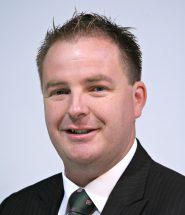
Edge computing is the key to helping governments unlock the potential of automated technology and deliver more efficient services by fast-tracking data processing, a specialist argues.
As councils across Australia look to automated vehicles and smart city technology, edge computing is essential in speeding up the processing of data and optimising technology services, says Adam Wilkinson, national application manager at Schneider Electric.
Edge computing involves processing data closer to where data is captured, such as a phone or mobile tower, which can drastically speed up the processing of data.
The edge is in growing demand as the number of devices connected to the Internet of Things network rapidly increases.
Typically, data from the IoT is collected in the cloud or at a centralised data centre and then processed later, resulting in a lag in processing time. But Mr Wilkinson says that as the number of devices in the IoT grows, “the edge” will be an “absolute requirement.”
#EdgeComputing is a method of optimizing #CloudComputing systems by performing Data Processing at the edge of the network, near the source of the #data by @hackernoon@antgrasso @FrRonconi @enricomolinari @vinod1975#IIoT #FogComputing #cloud #Technologies https://t.co/r3Sc9HoZxX pic.twitter.com/CK9gEJWzrp
— Giuliano Liguori (@ingliguori) August 7, 2018

“In order to provide real-time information to users, the edge needs to be in place. It’s as mission critical as anything in a centralised environment, whether that be a cloud-based service or a centralised data centre,” he told Government News.
Edge computing enables the capturing of data to occur at a more localised level and thereby drastically improves the processing time, Mr Wilkinson said.
Advances such as automated vehicles and enchanged traffic monitoring all required real-time data, meaning governments could not afford “the latency” of a traditional centralised centre for processing data, he says.
With the utilisation of smart devices the new norm, Mr Wilkinson said governments need to think about implementing edge computing into their digital strategies, or could risk slow data processing times, or even network failures, if centralised systems can’t keep up.
Utilising edge computing could help councils to tailor the delivery of certain infrastructure or services and improve efficiency – for instance by allowing data entered by residents, such as rate payments, to be more quickly accessible by the local government, Mr Wilkinson argues.
Why do we need an #IntelligentEdge to deliver #IoT? We asked Kap Sharma. #HPEMSFT #EdgeComputing #TechNativeTV #MSIgnite pic.twitter.com/Bl5TZpTUjH
— TechNative (@TechNative) August 6, 2018
Edge computing could also be used by local or state government to immediately access data on traffic or parking movements, thereby enabling them to more quickly redirect traffic and reduce congestion, he says.
“By getting a better understanding of traffic or parking movements, a council can provide better infrastructure at certain times or incentivise people to park in different locations depending on demand.”
Edge computing could also improve the willingness of the public to share data by creating more of a “two-way street,” Mr Wilkinson says, enabling councils to access data quickly and tailor services to users.
Capitalising on edge computing
Mr Wilkinson says that state and federal governments can capitalise on edge computing to improve the way public transport is managed and to prevent technology mishaps.
He pointed to the potential for the Australian Tax Office, for example, to “better collate its data from an edge perspective and provide services to taxpayers in real-time.”
Edge computing would help prevent network failures, such as that of the census bungle, by allowing data to be processed immediately and cope with a high volume of users, he said.
For state governments, the technology has the potential to help address worsening traffic congestion in major cities.
“If we better understand vehicle movement on roads, the state government can utilise edge to collect data and control traffic in better ways,” he said.
Comment below to have your say on this story.
If you have a news story or tip-off, get in touch at editorial@governmentnews.com.au.
Sign up to the Government News newsletter.
Most read
Scathing report finds little has changed at PwC
Qld council welcomes progress on massive battery system
Inquiry to consider how federal govt can address councils’ sustainability issues
‘Local’ procurement turns out not to be so local, committee hears
Another report finds local government falling down on cyber security
